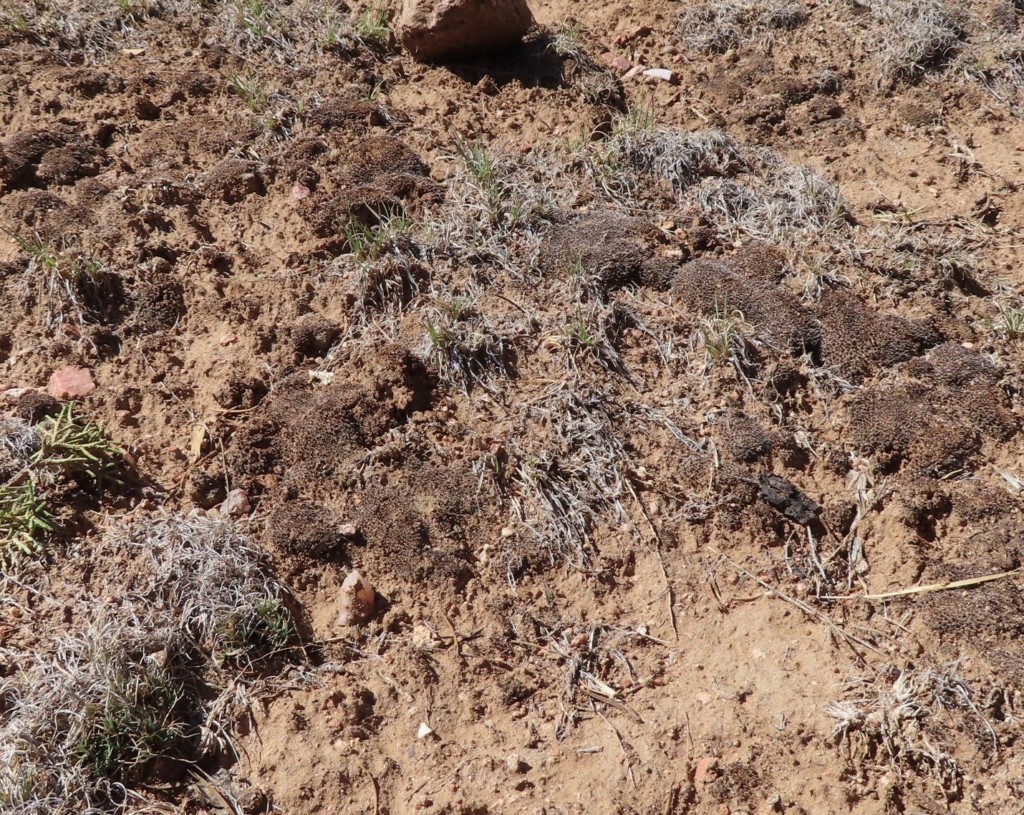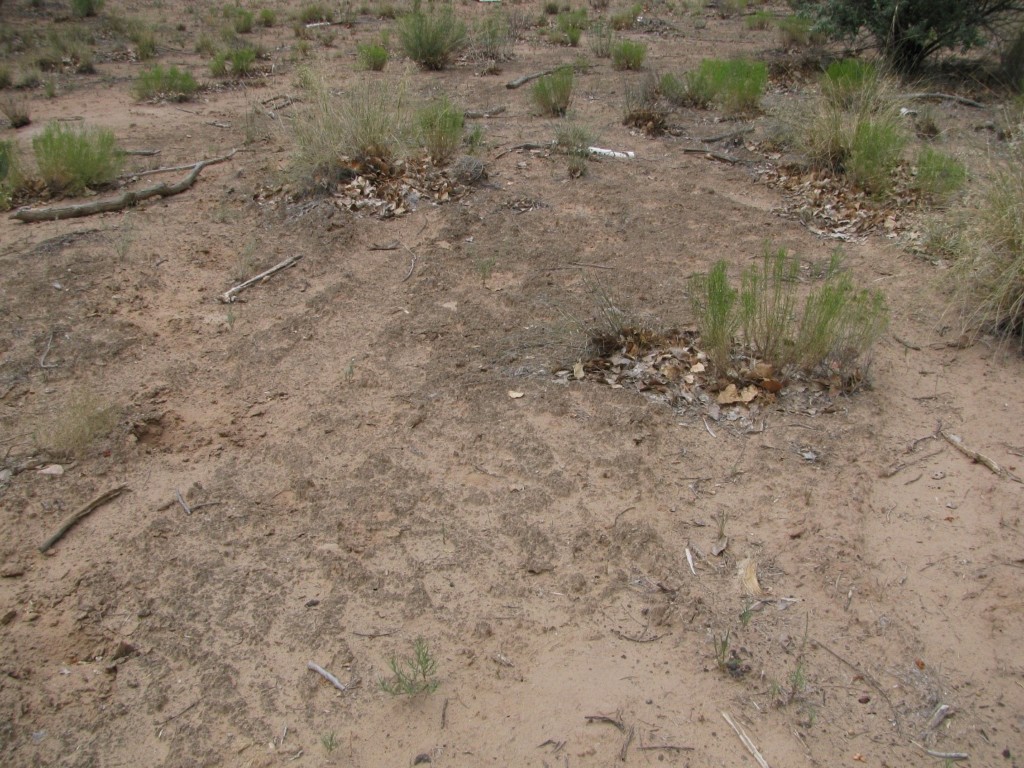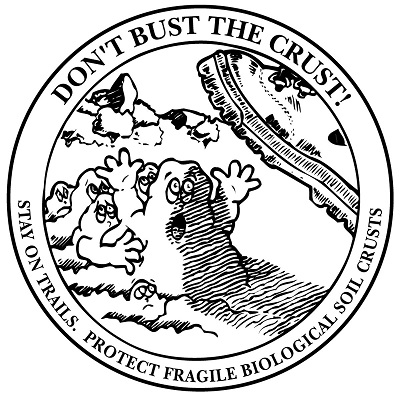January 1, 2022
By Sylvan Kaufman, Ph.D.
On desert soils worldwide live biological soil crusts, tiny communities living in the top inches of the soil. Sometimes called cryptogamic (hidden) or microbiotic (tiny) soils, they are made up of cyanobacteria, green algae, lichens, mosses, microfungi, and other bacteria. Sometimes there is a greater diversity of organisms making up a soil crust than there are plants in the plant community! The rhizines (root-like structures) of moss and algae, the hyphae of the fungi, and filaments from the cyanobacteria weave through the soil particles holding them together.
The organisms that make up soil crusts have some remarkable adaptations to their harsh environment. They can dry out completely, suspending respiration, but remain alive and not lose much tissue. Once hydrated, the photosynthetic species can resume carbohydrate production within minutes of receiving moisture.

Moss-dominated soil crust in the Piñon-Juniper Woodland at SFBG. Photo: Sylvan Kaufman
Soil crusts may be dominated by one type of organism. In Northern New Mexico, you frequently see crusts dominated by cyanobacteria, mosses, or lichens. Cyanobacteria tend to be more common at lower elevations, and mosses and lichens more common as elevation increases, until plants are so close together that there is no room for the soil crusts. Cyanobacterial-dominated crusts may appear as dark-colored or black and the cyanobacterial filaments may be visible when the crusts are moist. Moss-dominated crusts look a little furry and may have green or gold color when moist. Lichen-dominated crusts vary in shape and color depending on the type of lichen present, but the lichens are often large enough to be readily identified.
The exact composition of the soil crust is influenced by soil texture and soil chemistry, moisture, sunlight, elevation, surrounding vegetation, and disturbance frequency. Soil crusts undergo succession, just like a plant community. Cyanobacteria are the first to colonize, followed by lichens, mosses, and fungi.
Soil crusts help to protect soil from erosion by wind and water. They act as a living mulch, holding water and discouraging weed growth. Soil crusts fix nitrogen and contribute carbon to the soil. The dark color of crusts warms the soils, and warmer soils can speed seed germination and seedling growth and even influence foraging by ants and small mammals.
Soil crusts can influence which plants grow in a particular area. Small seeded annual species (including annual weeds like cheatgrass) may not be able to find enough bare soil to germinate in where soil crusts are well-developed. Large seeded species in arid regions rely more on burial by rodents or they have mechanisms to self-bury their seeds. Their success depends more on soil moisture and nutrient availability. Most studies show that soil crusts either do not affect, or they aid the establishment of grasses and herbaceous plants. Nutrient levels in plants growing in areas with soil crusts are often higher though.

Soil crust at the Rio Grande Nature Center Photo: Sylvan Kaufman
Soil crusts are easily damaged or destroyed by people walking on them, grazing animals, and vehicle traffic. Cyanobacteria can re-establish fairly quickly, but mosses and lichens take much longer to recover. Estimates of how long it takes soil crusts to develop vary widely from 2 – 3800 years! On the Colorado Plateau, the best estimates are that it takes 10-50 years for a mature, biodiverse soil crust to form. Recovery depends on the soil type, how intense the disturbance was, the climate following disturbance, and how close undisturbed soil crusts are among other factors.

National Park Service soil crust protection sign. Image: National Park Service
Because biological soil crusts are so fragile, the Garden encourages visitors to stay on trails and respect the living crusts!
Sources:
Don’t Bust the Biological Soil Crust, US Forest Service Rocky Mountain Research Station.
https://www.fs.usda.gov/rmrs/dont-bust-biological-soil-crust-preserving-and-restoring-important-desert-resource
Biological Soil Crusts: Ecology and Management, US Department of the Interior.
https://www.ars.usda.gov/ARSUserFiles/6112/biologicalSoilCrusts2.pdf
A Field Guide to Biological Soil Crusts of Western US Drylands. USGS.
https://www.usgs.gov/centers/southwest-biological-science-center/science/field-guide-biological-soil-crusts-western-us?qt-science_center_objects=0#qt-science_center_objects


